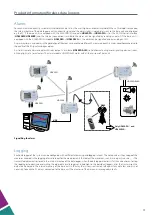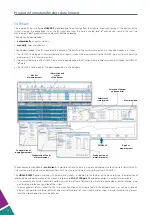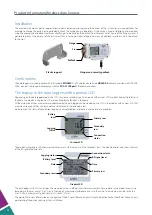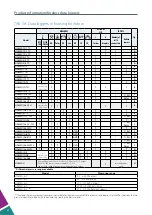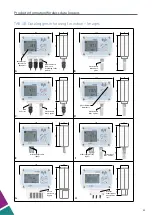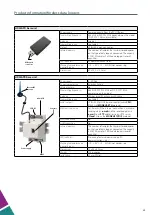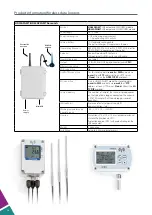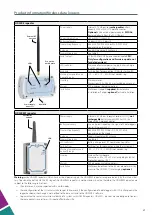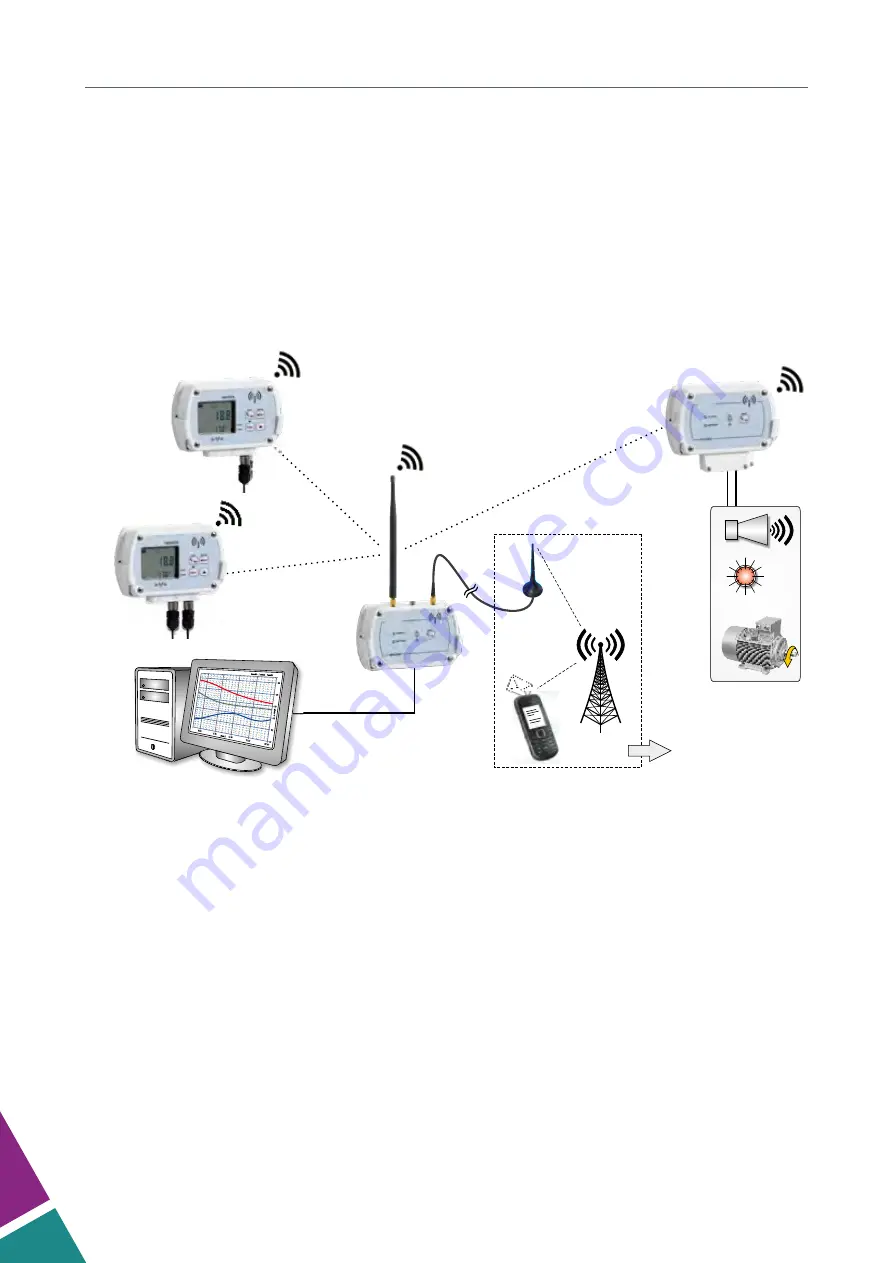
Product information Wireless data loggers
17
Alarms
For each measured quantity, two alarm thresholds can be set by the user (higher and lower threshold). When a threshold is exceeded,
the internal buzzer of the data logger emits an acoustic signal and the alarm signal is immediately sent to the base unit and displayed
on the PC. If the base unit is equipped with the GSM/GPRS/3G module (
HD35APG…/HD35AP3G…
) or the Wi-Fi/Ethernet interface
(
HD35APW/HD35APR
) and the Internet connection is available, the alarm can be signalled by sending an e-mail. If the base unit is
equipped with the GSM/GPRS/3G module (
HD35APG…/HD35AP3G…
), the alarm can be signalled also by sending an SMS.
An alarm hysteresis and a delay in the generation of the alarm can be configured for each measured quantity. Alarm conditions according to
the quality of the RF signal can be generated.
A wireless remote alarm module with relay output is available (
HD35ED-ALM
), so to allow activating more signalling devices (sirens,
blinking lights, etc.) or actuators. The alarm module HD35ED-ALM works with all the versions of base unit.
USB
GSM
HD35ED...
HD35ED...
HD35AP...
HD35ED-ALM...
Only HD35APG… and
HD35AP3G…
Logging
Each data logger of the system can be configured with a different measuring and logging interval. The stored value is the average of the
measures acquired in the logging interval (except for the measurements that detect the maximum, such as wind gust, rain rate, …). The
transmitted data are also stored in the internal memory of the data logger; when the data logger memory is full, it can be chosen to stop
the logging or to continue overwriting the older data (cyclic logging). In addition to the individual loggers, after the transmission the
data are also stored in the internal memory of the base unit; in this way the system is extremely safe against any data loss and it is not
necessary to keep the PC always connected to the base unit. The memory of the base unit is managed cyclically.
Signallling the alarm















